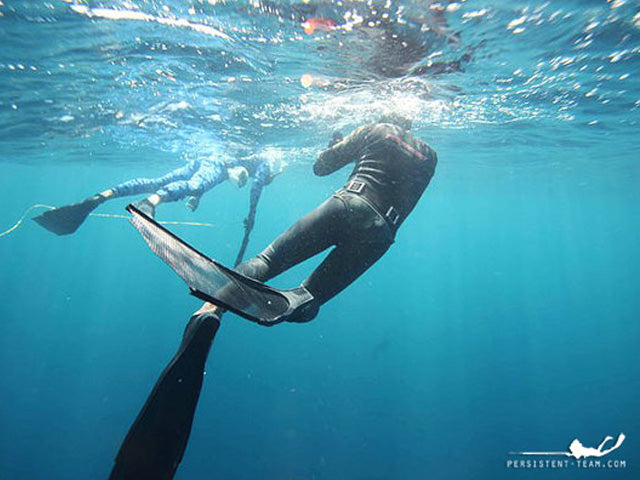These fins are currently available with blades of thermoplastic or composite materials such as fibreglass, carbon or carbon/kevlar. Price varies with the types of material in the blades and the labour content of manufacture, with thermoplastics being the least expensive and carbon composite the most expensive.
The least expensive type of fin is a molded one-piece foot pocket and thermoplastic blade. These are normally very robust. If you are on a budget or new to the sport these would be a fine choice. However if you damage a blade or foot pocket badly, that is the end of your fins.
Two-piece fins have thermoplastic or composite blades. These have the advantage that blades can be replaced or interchanged, using the same footpockets. So if a blade or footpocket is damaged it can be replaced separately.
They also allow freedom of choice. By choosing a quality two-piece thermoplastic fin and an extra set of composite blades only, it is possible to change the blade according to your needs.
Generally, it follows that the more expensive the fins, the lighter the blade, the better the dynamics and efficiency of the blade and footpocket. If you require a fin for shorter dives, shore entries or rock hopping, thermoplastic blades are highly suited. If you are into extended long swims, diving really deep or swim in lots of current, you may wish to consider the more expensive end of the spectrum.
Ultimate performance is really about the marriage of the right blade with the right footpocket. Subtle differences in these combinations can dramatically alter the end performance of any combination.
There are many types of footpockets, with varying combinations of stiffness of rubber throughout the pockets and also the tendons that extend from the footpocket, along the sides of the blade. To get the most performance from any blade, the relative hardness of the rubbers in a footpocket must be in the right places: the sole, for transfer of the power from the foot to the blade; and in the tendons, as this affects the way in which the blade flexes and how it performs.
There are many shapes of foot pockets suiting different shaped feet. Some have very soft and flexible rubber, some stiff. We will attempt to guide you in your choice of fins, footpockets and blades, though our descriptions and sizing charts. If you require further assistance, contact us.

